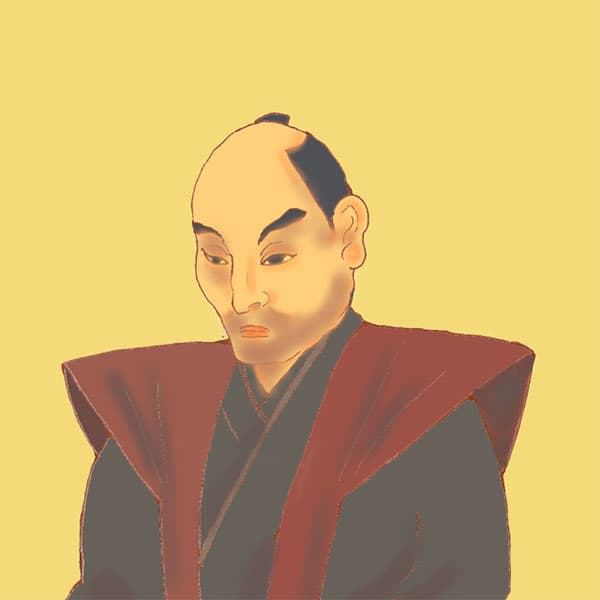- Tateyama DomainIt was once abolished
- Tateyama Castle was a domain that ruled the Awa region in the southern part of Chiba Prefecture. It was founded by the Awa Satomi clan, famous for the long fantasy novel Nanso Satomi Hakkenden, but was abolished after only one generation and was abolished for over 100 years. It is said that it was revived as a domain by Masaaki Inaba.

Tateyama CastleTateyama City, Chiba Prefecture
- TOP
- Kanto
- Chiba prefecture
- Tateyama Castle
| Other name | Negoya Castle |
|---|---|
| castle construction | 1580 |
| address | 351-2 Tateyama, Tateyama City, Chiba Prefecture |
- Access to Tateyama Castle
- Get off at Tateyama Station on the JR East Uchibo Line, take a bus from the east exit and get off at the Shiroyama Koen-mae stop, then walk for about 5 minutes.
HISTORYTateyama Castle was abandoned when the Satomi clan was abolished.
Tateyama Castle is a flatland castle that was located in Tateyama City, Chiba Prefecture until the early Edo period. It was built by the Awa Satomi clan, a branch of Nitta Yoshisada, and was abandoned when the Satomi clan was abolished. Let's unravel the history of Tateyama Castle, which shared the fate of the clan.
- Construction of Tateyama Castle
- Tateyama Castle was built in 1580 by Satomi Yoshiyori, the seventh head of the Awa Satomi clan. The Awa Satomi clan was a branch of the Nitta clan, whose ancestor was Nitta Yoshishige, a military commander active from the end of the Heian period to the early Kamakura period, and ruled the Boso region during the Sengoku period.
Satomi Yoshiyori was adopted by his eldest brother Yoshihiro, but his conflict with Yoshihiro's biological son, Satomi Yoshishige, over the division of territory deepened. Satomi Yoshihiro made peace with the Later Hojo clan, who ruled the Sagami region, in 1577, and Satomi Yoshiyori married Hojo Ujimasa's daughter and sister. After Satomi Yoshihiro's death, Satomi Yoshiyori and Satomi Yoshishige entered into a full-scale battle over his succession. With the backing of the Hojo clan through his wife, Satomi Yoshiyori defeated Satomi Yoshihiro's biological son, Satomi Yoshishige, and took all of the territory for himself.
Tateyama Castle was built after Satomi Yoshiyori took control of the Boso Peninsula. In the same year that Tateyama Castle was completed, Takeda Katsuyori, the eldest son of Takeda Shingen, and Satake Yoshishige of Hitachi Province formed an alliance to oppose the Later Hojo clan. Satomi Yoshishige also joined this alliance, and it seemed as if an anti-Hojo force had been formed, but when Oda Nobunaga destroyed Takeda Katsuyori in 1582, the alliance was dissolved.
In the same year, Oda Nobunaga was killed by Akechi Mitsuhide along with his eldest son Oda Nobutada in the Honnoji Incident. With the death of Oda Nobunaga, the Tensho Jingo War broke out over the former Takeda territory. During this war, Satomi Yoshiyori cooperated with the Hojo clan by sending them reinforcements, but after the death of his wife, who was a member of the Hojo clan, he again came into conflict with Hojo Ujimasa and began to work towards unifying the country, aligning with Toyotomi Hideyoshi.
Thanks to Satomi Yoshiyori's outstanding diplomatic skills, the Satomi clan lost Kazusa and Shimousa provinces during Toyotomi Hideyoshi's attack on Odawara, but Awa province was spared. It is said that Tokugawa Ieyasu mediated between the Satomi clan and Toyotomi Hideyoshi at this time. - Abandoned Tateyama Castle
- The Satomi clan sided with the Eastern Army in the Battle of Sekigahara in 1600. As a result, they were granted 30,000 koku of land in the Hitachi Kashima domain as a reward for their achievements, and the Satomi clan was promoted to a feudal lord with a fief of approximately 120,000 koku. However, in 1618, when Satomi Tadashige, the eldest son of Satomi Yoriyoshi, became the feudal lord, the clan was stripped of its title by the shogunate for dereliction of duty.
The Satomi clan never regained the title of feudal lord again, and their descendants scattered and served as vassals in various domains. The Tateyama domain was temporarily abolished due to the Satomi clan's abolition, and Tateyama Castle was also destroyed. Later, in 1781, Inaba Masaaki became the lord of the Tateyama domain and the domain was restored, but Tateyama Castle was not rebuilt. - The reconstruction of Tateyama Castle and the Nanso Satomi Hakkenden
- Tateyama Castle had a replica castle tower rebuilt in 1982.
The interior is a museum for Nanso Satomi Hakkenden, a fantasy novel written by Takizawa Bakin in Bunsei 11 (1814). The story of eight dog warriors who possess the jewels of "benevolence, righteousness, courtesy, wisdom, loyalty, faith, filial piety and fraternity" and save the Awa Satomi clan from peril with perfect punishment captivated many Edo commoners, and is still popular today as it is adapted into movies and TV dramas. Although the story is fiction, it was modeled after the Satomi clan who founded the Tateyama Domain, and so within Tateyama Castle, there are exhibits of bound volumes and ukiyo-e prints related to Nanso Satomi Hakkenden.
The area around the reconstructed Tateyama Castle has been developed into a park with a museum that houses materials related to the Satomi clan, a grassy plaza, a plum garden, and a cherry blossom path, making it a place of relaxation for local residents. - summary
- Tateyama Castle was built at the end of the Sengoku period, but was abandoned after only 40 years of operation. More than 100 years after the Tateyama Domain was abolished, Masaaki Inaba established a new domain. However, once abandoned, Tateyama Castle was never rebuilt. However, the Satomi clan has been resurrected in fiction, and is still loved by many people today.
Read about incidents related to Tateyama Castle
- Okubo Nagayasu IncidentAn embezzlement case in the early Edo period? Or a political change? What is the “Okubo Nagayasu Incident”?
- Political factionalism is always present. However, now even if you lose, you won't lose your life. However, during the Edo period, there were cases where clans were destroyed as a result of losing the battle for power. One of them was Keicho 18 (1613).

History of the Tateyama domain, with Tateyama Castle as the domain office
| Domain office | Tateyama Castle |
|---|---|
| old area | Anwa country |
| stone height | 10,000 koku |
| Fudai/Tozama | Fudai |
| main lord | Mr. Inaba |
| Estimated population | 24,000 people (first year of the Meiji era) |
The Tateyama clan was divided into two periods: in the early Edo period, when the Satomi family, who were descended from feudal lords from the Sengoku period, ruled the province of Awa, and in the late Edo period, when it was a small domain of Fudai, with the Inaba family as the lords. Divided into.





















